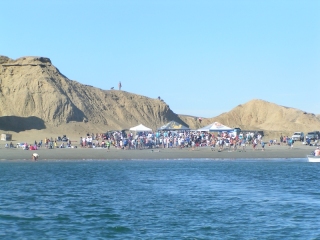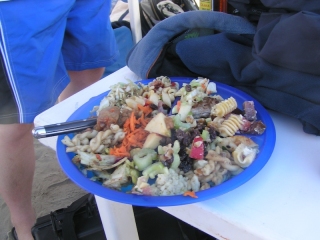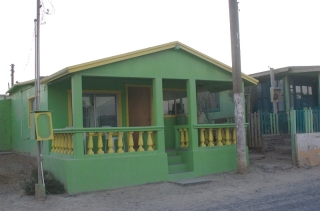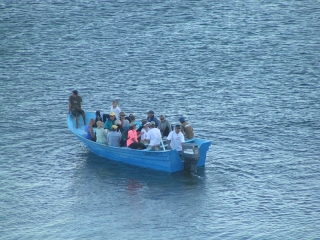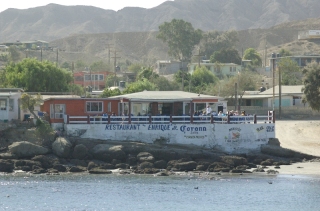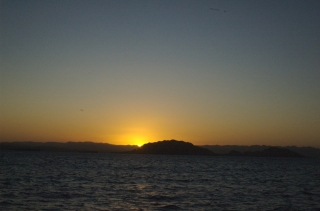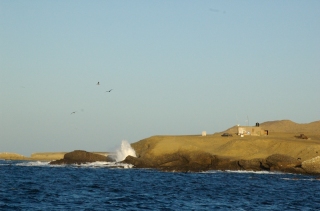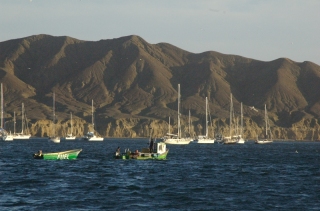Jun 24 2010
Baja Bash: Bahia de Asuncion to Bahia de Tortugas (June 24, 2010)
Around 3:45am, Marishanna and I were underway from Bahia de Asuncion to Bahia de Tortugas. We rounded the large islands and with almost no winds at all, made our way towards the open ocean and Turtle Bay.
There are two successive points that you have to pass, followed by a long, open bay (Bahia de San Cristobal). The northwest end of the bay has Thurloe Head with a small protected anchorage behind it, roughly an 8-mile rock outcropping and then the entrance to Turtle Bay. It is a straight-forward passage–with the exception of the fishing nets around San Pablo (the fisherman in Bahia San Hipolito warned me about them).
I was motor-sailing as the sun rose (6 – 8 knots of fluky wind was not enough to sail), and the further I got into the ocean, the stronger the seas built. Quickly, they were 2-meter waves every 2 – 3 seconds–a rough, pounding time and a bit more than lumpy, in my opinion. Shortly after, the fluky winds amplified to 15 – 20knots, and remained fluky–shifting as much as 20 degrees in the course of a few minutes.
I tinkered with the course a bit more, wanted to stay outside to avoid the fishing nets and the only course that balanced the waves and the wind was taking me WSW–away from Turtle Bay. So . . . I dropped the main sail, lashed it to the boom, and powered the rest of the way to Turtle Bay. It was quite a difference from the full sail of yesterday.
The seas stayed a bit more than lumpy and the winds stayed above 20knots all day, but landfall happened quickly, and I was sitting on the hook by 1pm. Also, while in Bahia de San Cristobal, I saw the spouts of three whales. They never breeched, but they were there . . . .
Turtle Bay is a large stopping point for boats on their way either up or down the Baja outside passage (there are more than a dozen boats here now). Clean diesel and potable water are available here (they actually bring it right to the boat), and there is a small town as well where you can re-provision, get warm showers, and a cold beer. There are cell phone signals here, too–and, internet access.
I also needed a few small repair parts for the boat–a spare belt for the engine and some fuses–which I was able to obtain pretty easily. I will be here for a few days to do some minor repairs on Marishanna, re-provision, buy diesel and water, and to get some current weather information.
And, then–it is the final 350Nm to San Diego and home . . . .
Location:
27°41.080′ N
114°53.317′ W
